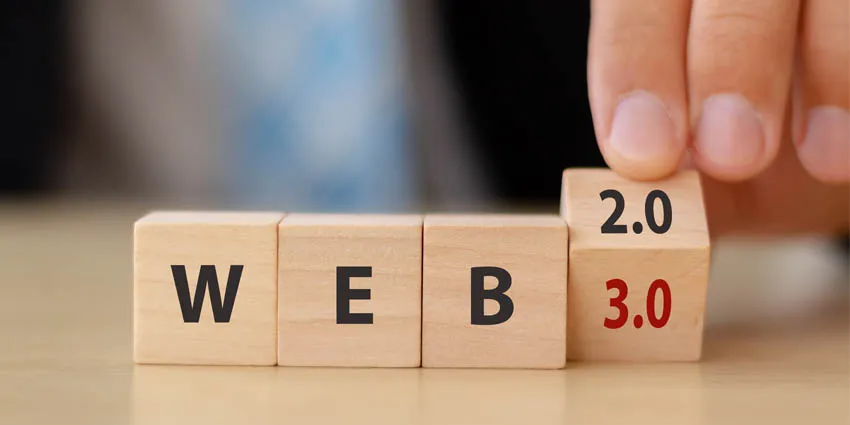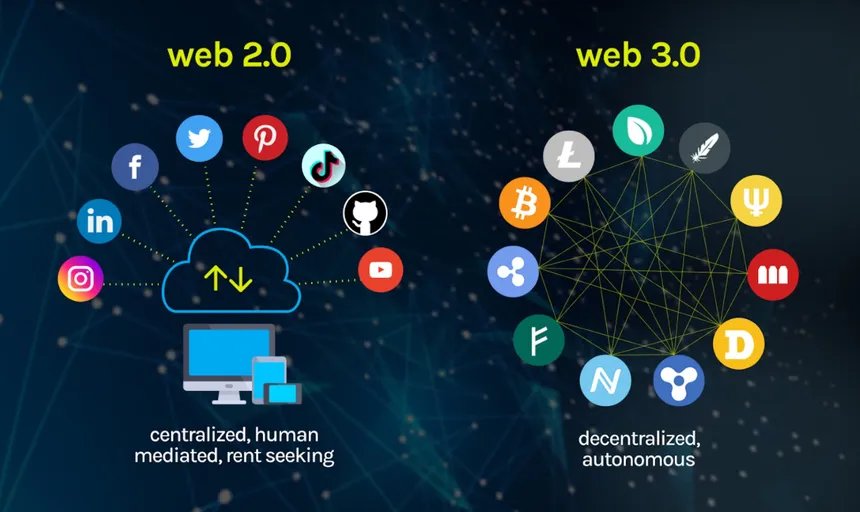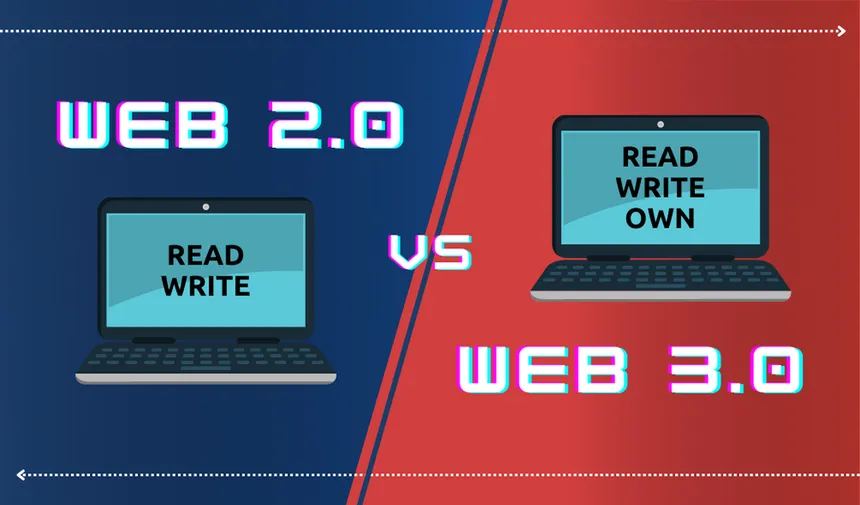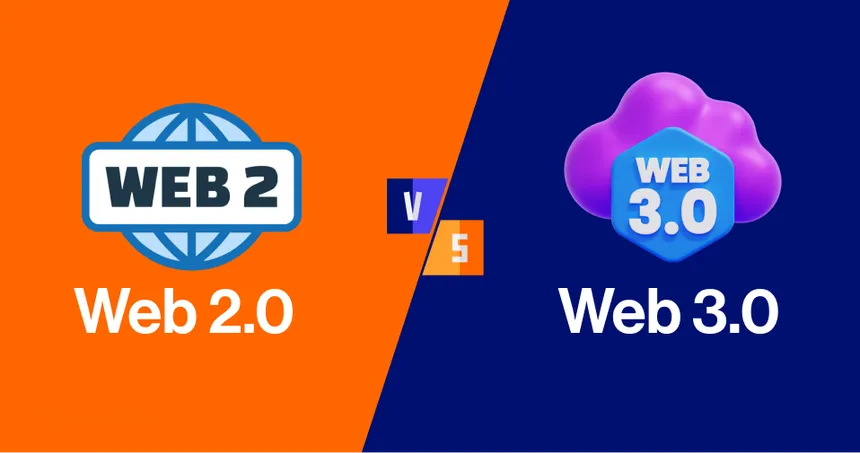"Web 2.0 vs. Web 3.0: The Battle for the Future of the Internet"
 Ayan
Ayan
The internet has undergone a rapid evolution since its inception, marked by distinct stages, commonly referred to as Web 1.0, Web 2.0, and now Web 3.0. Each phase has introduced new capabilities and user experiences that reflect advances in technology and changing user expectations. This article will delve into the main differences between Web 2.0 and Web 3.0, exploring the concepts, characteristics, and advantages of each.
What is Web 2.0?
Web 2.0, often called the "Social Web" or the "Participative Web," is the second generation of internet services that gained momentum around 2004. Unlike Web 1.0, which was primarily static and read-only, Web 2.0 made the internet more dynamic, social, and interactive. It enabled users to become content creators, not just consumers.
Key Characteristics of Web 2.0:
User-Generated Content: Users can create, share, and interact with content through platforms like social media, blogs, forums, and video-sharing sites. This marked the rise of platforms like Facebook, YouTube, and Twitter.
Centralization of Data: In Web 2.0, data is typically stored and controlled by centralized entities. Major tech companies (Google, Facebook, Amazon, etc.) collect and manage large amounts of user data.
Interactivity and Collaboration: Web 2.0 focuses heavily on social interaction and collaboration. Platforms allow users to interact with each other, such as through comments, likes, and real-time chats.
Rich User Experience: Web 2.0 introduced more visually appealing and interactive elements. Rich media, like video and animation, became widely used, making websites more engaging.
APIs and Integration: Web 2.0 relies on APIs to allow different applications to communicate with each other. This makes it easy for third-party developers to create apps that integrate with popular platforms.
Advertising-Based Monetization: Many Web 2.0 platforms rely on advertising as their primary revenue model, which leads to the collection and sale of user data for targeted advertising.
What is Web 3.0?
Web 3.0, often referred to as the "Semantic Web" or the "Decentralized Web," is the next generation of the internet. It represents a shift towards a more intelligent, interconnected, and user-centric web. Web 3.0 is still evolving but aims to address many limitations of Web 2.0, such as data privacy concerns and reliance on centralized entities.
Key Characteristics of Web 3.0:
Decentralization: Web 3.0 leverages blockchain technology to eliminate the need for central authorities, giving control back to users. In this model, data is stored across a distributed network rather than on centralized servers.
Enhanced Privacy and Ownership: Web 3.0 promotes user ownership of data and digital assets. It aims to give users more control over their personal information, allowing them to decide how and with whom they share it.
Semantic Web and Artificial Intelligence: Web 3.0 aims to create a "smarter" internet that understands user intentions. By using semantic technology and artificial intelligence (AI), Web 3.0 can interpret information contextually, making it easier for machines to understand human requests and intentions.
Token-Based Economy: Web 3.0 introduces tokenomics, where tokens (like cryptocurrency) incentivize participation and reward users. This economic model allows users to benefit directly from their contributions to the network.
Interoperability: Web 3.0 platforms aim to be interoperable, meaning they can work across various devices and environments. Decentralized applications (dApps) will run on multiple platforms without needing centralized entities to mediate.
Personalized User Experience: Using AI and machine learning, Web 3.0 can provide a highly personalized experience, anticipating user needs based on preferences and behavior.
Key Differences Between Web 2.0 and Web 3.0
| Aspect | Web 2.0 | Web 3.0 |
| Data Ownership | Centralized (controlled by companies) | Decentralized (user ownership) |
| Privacy | Limited privacy, data shared with third parties | Enhanced privacy, user control over data |
| User Interaction | Social, interactive, content-driven | Semantic, AI-driven, user-centric |
| Monetization | Advertising-based | Token-based (cryptocurrencies, NFTs) |
| Technology | API integration, centralized databases | Blockchain, AI, semantic web |
| Control | Controlled by platforms | Community-owned and governed |
| Security | Vulnerable to data breaches | Secure through cryptographic protocols |

Pros and Cons of Web 2.0 and Web 3.0
Advantages of Web 2.0:
Highly interactive and social experience
Easy-to-use platforms with a vast amount of free content
Wide-reaching connectivity through major platforms
Disadvantages of Web 2.0:
Lack of data privacy and centralized data control
Targeted advertising based on user data
Potential for censorship and content control by corporations
Advantages of Web 3.0:
Increased user control over data and privacy
Opportunities for financial independence through token-based economies
Intelligent, personalized experiences powered by AI and machine learning
Disadvantages of Web 3.0:
Requires technical understanding (e.g., crypto wallets, blockchain)
Scalability and user-friendliness challenges
Regulatory uncertainty surrounding decentralized technologies

Conclusion
The transition from Web 2.0 to Web 3.0 represents a significant shift in how we interact with the internet. While Web 2.0 brought interactivity, social networking, and user-generated content to the forefront, it also raised concerns about data privacy and centralization. Web 3.0, on the other hand, aims to address these issues by introducing decentralization, enhanced privacy, and a more intelligent, user-centered experience. Though still in its early stages, Web 3.0 holds the potential to redefine the digital landscape and give users greater autonomy and control over their online lives.

Subscribe to my newsletter
Read articles from Ayan directly inside your inbox. Subscribe to the newsletter, and don't miss out.
Written by

Ayan
Ayan
"I post blogs here in a simple way, so that a 5-year-old can read and understand them."